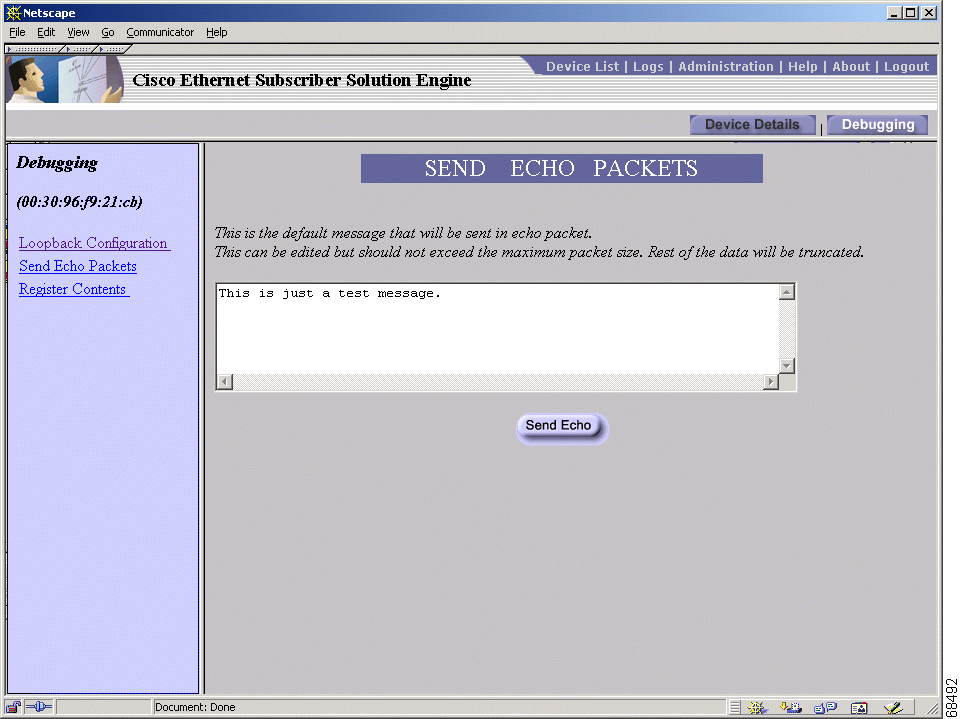|
|

With the debugging screens allow you can access log messages, memory register values, and other technical details to troubleshoot problems. Also available is a loopback mode for both the internal and PHY interfaces. The values of all 32 PHY registers are displayed and links to relevant trace files are provided in debugging screens. To access these screens, select the Debugging tab in the user interface.
By default, the Cisco ONT 1031 is in normal loopback mode. All the echo packets sent are looped back to the Cisco ESSE, and all other traffic is handled normally. You can also put the Cisco ONT 1031 in PHY loopback mode. In this mode, all the packets except the echo packets are dropped at the interface while the echo packets are returned to the Cisco ESSE. If PHY loopback is enabled, it is your responsibility to disable it by returning to normal loopback mode to resume normal operation. Entering PHY loopback mode on a device will disable all user traffic for that device. The Cisco ESSE resets device counters when switching back to normal mode. Figure 4-1 shows a Loopback Configuration screen.

 |
Note Sending echo packets in PHY loopback mode provides more exhaustive testing, and causes all traffic to be dropped. Use normal loopback mode echo packets if you do not wish to disturb traffic flow. |
 |
Note The Configuration Data screen behaves differently in PHY loopback mode, as described in the "Configuration Data Screen" section 3-3. |
 |
Note The only valid operations allowed during PHY loopback mode are hard reset, switch to internal loopback, send echo request and other read requests. |
You can send echo packets to the Cisco ONT 1031 both in Normal and PHY loopback mode. The packets are returned with no change to the data. When you opts to send an echo packet, a default text message to send in the echo packet is presented. You can either edit the default message or use it without any modifications. The message is truncated by the software to 1024 bytes, if necessary. Figure 4-2 shows a Send Echo Packets screen.

Using this screen, an advanced user can read the contents of the 32 subscriber PHY registers. These values indicate the state of the device and provide help in troubleshooting. The register values are read-only. Only a qualified Cisco engineer can use this screen to debug PHY loopback problems. Register value meanings are described in the ALASKA 88E1000/88E1000S Integrated 10/100/1000 Gigabit Ethernet Transceiver specification document. A sample PHY Register Contents screen is shown in Figure 4-3.

![]()
![]()
![]()
![]()
![]()
![]()
![]()
![]()
Posted: Wed Sep 4 22:07:18 PDT 2002
All contents are Copyright © 1992--2002 Cisco Systems, Inc. All rights reserved.
Important Notices and Privacy Statement.